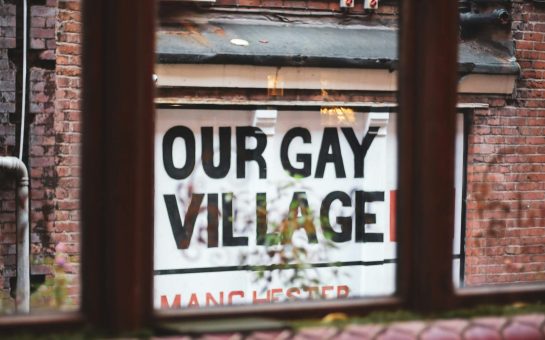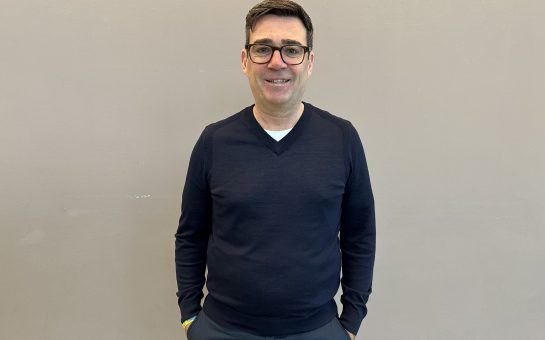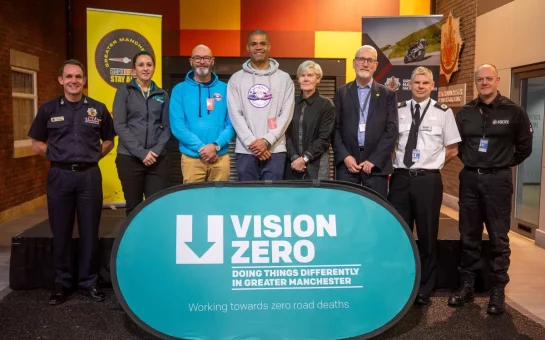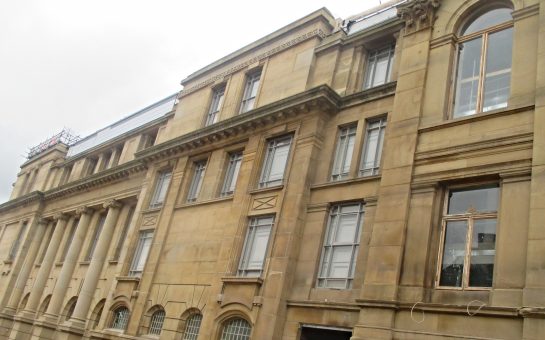Manchester is one of two UK cities to set out a zero waste aim – meaning that by 2050, we need to be recycling or recovering energy from as much waste as we use, ensuring nothing goes to landfill.
The recycling rate for households in Greater Manchester was measured at 47% in 2018, but in order to keep on track to becoming a zero waste region, that stat must rise to 55% by 2025.
With this in mind, I wanted to witness first hand just how our discarded packaging and used bottles are being dealt with, and whether the tools are indeed in place to turn our zero waste aim into a reality.
Greater Manchester’s Material Recovery Facility (MRF) therefore seemed like the ideal spot for a behind-the-scenes tour.
The hi-tech facility based on Longley Lane in Sharston boasts an impressive 95% recycling rate, receiving the contents of almost every household’s recycling bin from nine of the ten Greater Manchester councils – with Wigan being the only exception.
Alison Fare walked me around the facility – Recycle for Greater Manchester’s Lead Education Officer, a role that saw her and a small team welcome over 4,550 visitors for various tours in the last year.
“The MRF is basically just a big machine that takes the items from your mixed recycling bin and separates them out so they can be sold on to different reprocessing factories,” she explained.
“The materials that the facility accepts are: aluminium cans, glass bottles and jars, aerosol cans, plastic bottles, steel cans and clean foil,” and with 1,400 tonnes coming through the door each week, I was eager to see just how the waste is whittled down so precisely, yet with such speed and success.
Let the sorting begin…
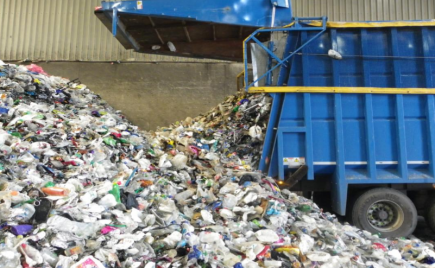
First, waste collection trucks unload the recycled material onto a conveyor belt, which then whizzes into a pre-sorting cabin past a handful of spotters who pick out any incorrect or obscure items that may have ended up in the wrong bin.
As the conveyor belt weaves out of the cabin and into the facility’s main building, a magnet hanging above the belt removes the steel cans – just like the ones you buy soup or baked beans in. Unlike aluminium cans, steel is magnetic, thus can be removed rather easily and without too much hassle.
The remaining waste is then passed over several metal rollers designed to crush the recycled glass into finer pieces. The glass then falls through a metal grid beneath the belt, before being collected in large piles and sold on for reprocessing.
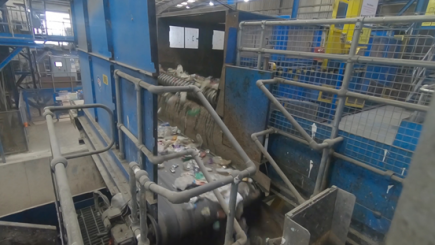
With the glass and steel removed, an eddy current separator is then applied to the belt so that an electro-magnetic current is created.
This then repels the non-ferrous aluminium cans so that they appear to jump into a separate sorting channel aside of the conveyor belt. The magnetic field does not affect the remaining waste, so it simply drops onto a lower belt due to gravity, where it is then transported to the final stage of sorting. The aluminium cans meanwhile are baled into cubes.
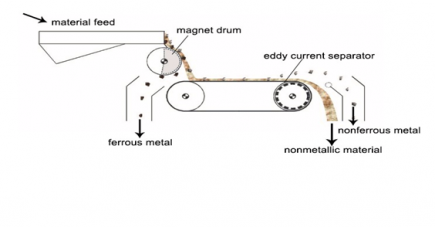
Then, the technology takes over. Two machines – Aladdin 1 & Aladdin 2 – use infrared lasers to measure the density of the plastic bottles that quickly pass by. In the process, the machinery separates the HDPE from the PET; the two types of plastics used to make plastic bottles. HDPE is known for its strength and durability, while PET is commonly used to produce clear drinks bottles as it provides a sound oil barrier – which prevents chemicals from attacking the plastic.
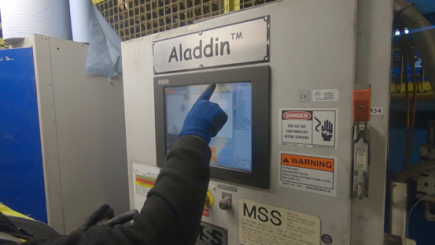
But no matter how sophisticated the technology may be, manned stations are still required to spot and cipher out any contamination.
The majority of contamination usually consists of other plastics such as bags, pots, tubs and trays, and these wrong plastics can have a detrimental impact on the facility’s quality of recycling.
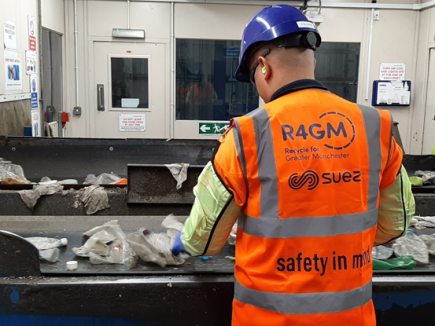
However Alison was keen to point out that wrongly placed plastics aren’t the only problem when it comes to contamination.
“We’ve had some pretty strange contamination over the years that can cause quite a stir around the facility when the bins are unloaded. We’ve had all sorts – you name it: animal carcases, tyres, baths! Who knows why people think these items are recyclable.
“My one piece of advice would be – when putting something in your recycling bin check the Recycle for Greater Manchester or council website to make sure that item is definitely allowed in one of those bins!”
But even with all the MRF’s sorting might and impressive statistics – in order to reach the 55% recycling aim by 2025 and be on course for the longer-term goal of zero waste by 2050, the responsibility ultimately lies in our hands to recycle right.
According to Tina Harding at the Greater Manchester Combined Authority: “The key thing is to be that little bit more careful about what we buy, and more and more people are definitely doing that.
“A key amount of waste is obviously coffee cups, but we can prevent that by taking our own reusable cups everyday – and in a way we’re saving money as well as you get a bit of a discount – and the same applies for bottled water too.”
The rising recycling rates in the region are a true testament to more and more people’s openness to trying more environment-friendly life hacks; like buying fruit and veg loose, not forgetting your bag for life, and not falling victim to buying fast, throwaway fashion each season.
With facilities like the MRF, the sky is truly the limit for improving our recycling rate year upon year, but the technology cannot ultimately be relied upon alone, and it’s down to us to be more mindful with how we are disposing of our waste.
For more information on what items are accepted and where your nearest recycling centre is, along with more great recycling hacks, visit: https://recycleforgreatermanchester.com/
If you want to know more about the region’s zero waste aim and the work being done at the MRF – visit https://zerowastegm.co.uk/
Images courtesy of R4GM (1) & letsrecycle.com (2) – with thanks.
